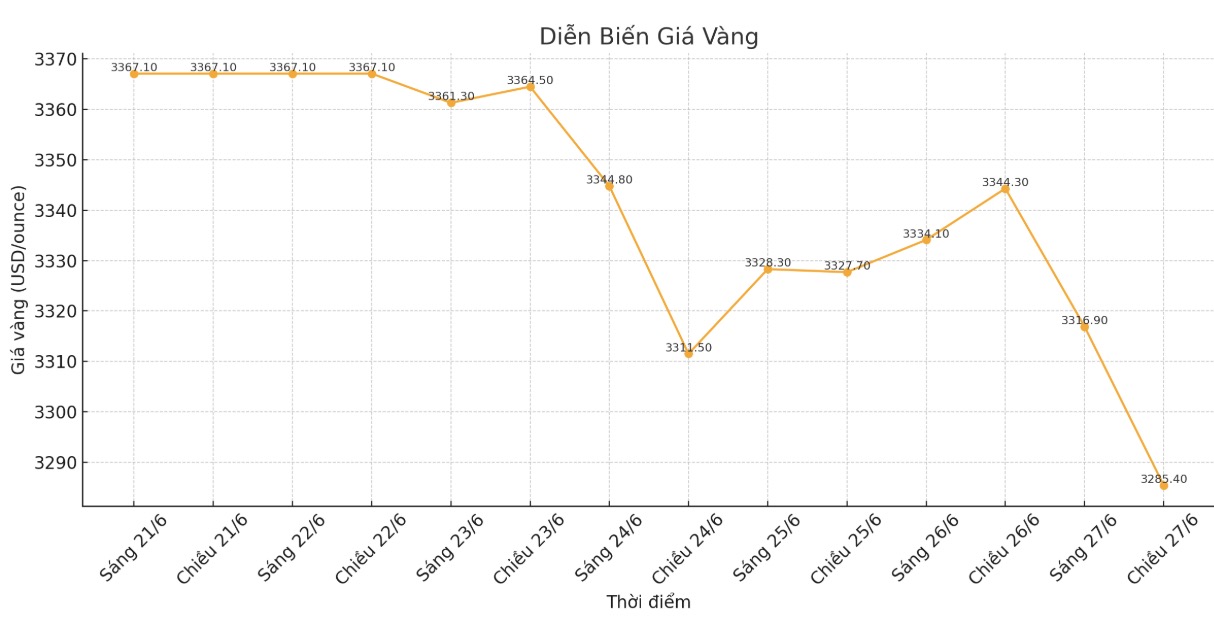Gold prices fell as a ceasefire between Israel and Iran and progress in US-China trade negotiations weakened safe-haven demand, as investors awaited US inflation data.
Spot gold fell 1.2%, to $3,288.55 an ounce at 06:43 GMT. For the whole week, the precious metal lost 2.3% of its value.

ANZ commodity strategist Soni Kumari commented that the market is showing some optimism about risky assets, which puts pressure on gold prices. She said that the tension in the Middle East eased after the ceasefire agreement and progress in US-China trade negotiations, reducing market uncertainty, dragging gold prices further down.
Iran and Israel have gradually returned to normal life after 12 days of the most intense confrontation ever between the two countries, with a ceasefire effective from Tuesday.
Meanwhile, the US has reached an agreement with China to accelerate shipments of rare earths to the US, a White House official said on Thursday, in an effort to end the trade war between the world's two largest economies.
Investors are waiting for the US PCE core inflation data to be released at 12:30 GMT for more clues on the policy direction of the US Federal Reserve (FED). Analysts surveyed by Reuters forecast that core PCE inflation this month will increase by 0.1% compared to the previous month and increase by 2.6% compared to the same period last year.
The market is now predicting that the FED will cut interest rates by a total of 63 basis points this year, starting in September.
US President Donald Trump believes that maintaining inflation at a low level means the Fed should soon cut policy interest rates, but so far only two Fed officials have supported the possibility of cutting interest rates at the July meeting.
For other precious metals, spot silver fell 0.5% to $36.44 an ounce; platinum lost 2.8% to $1,378.18 an ounce after reaching its highest level in nearly 11 years. Palladium rose 0.3% to $1,135.36 an ounce - its highest level since October 2024.
See more news related to gold prices HERE...











